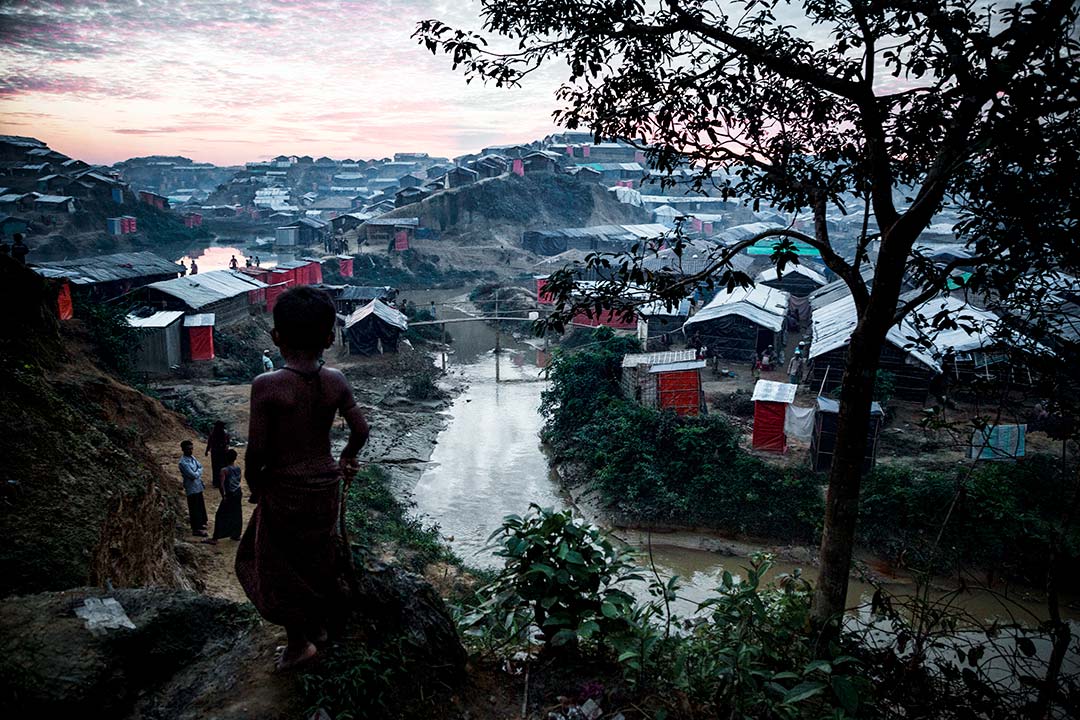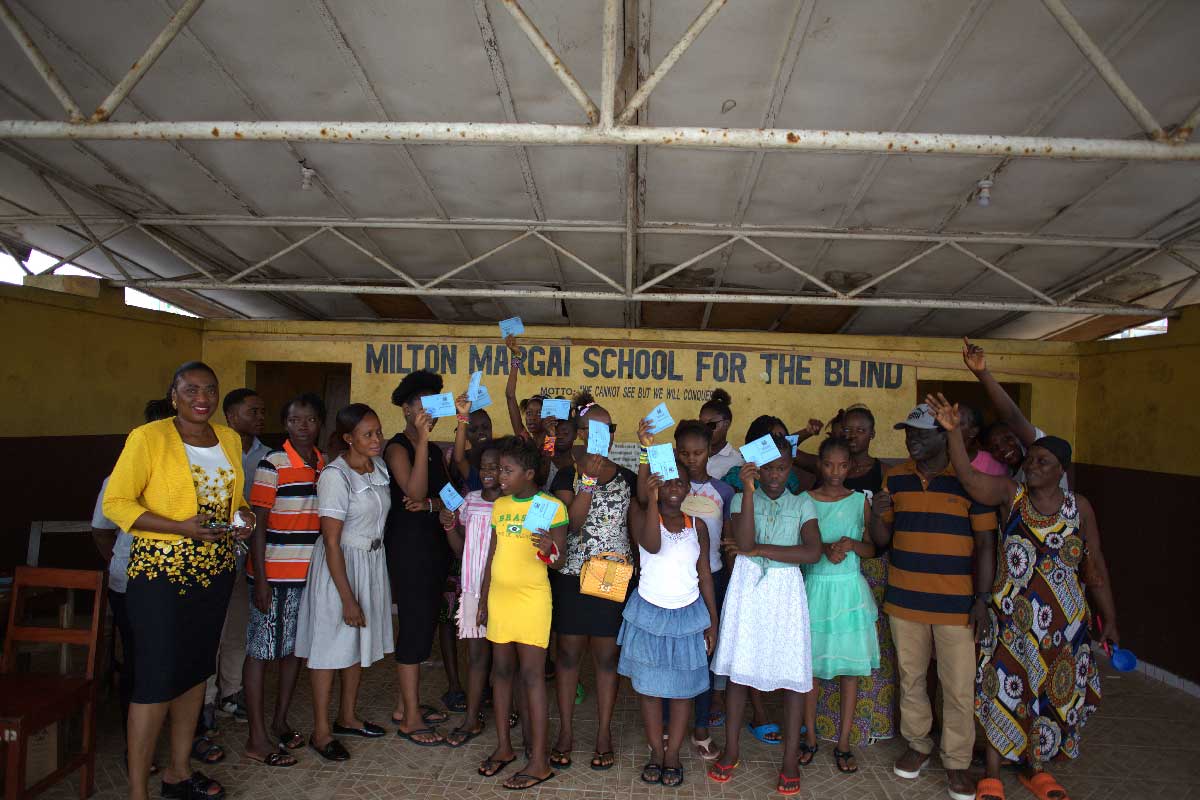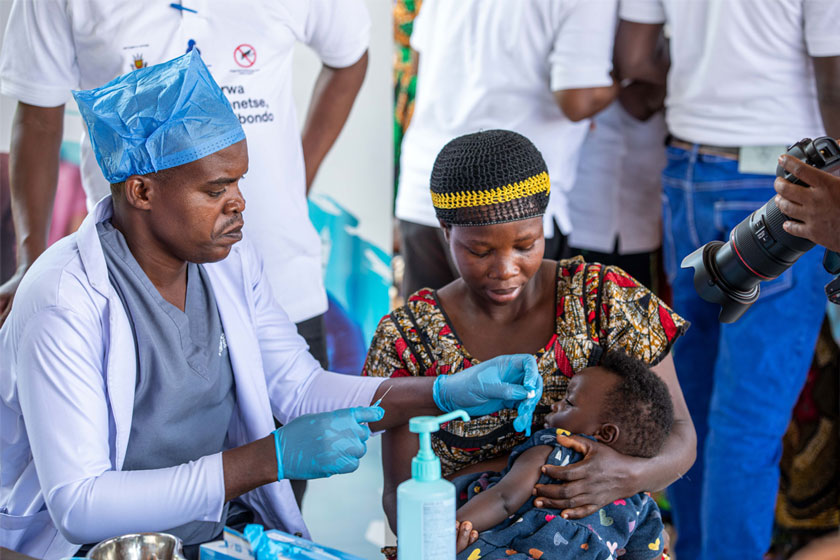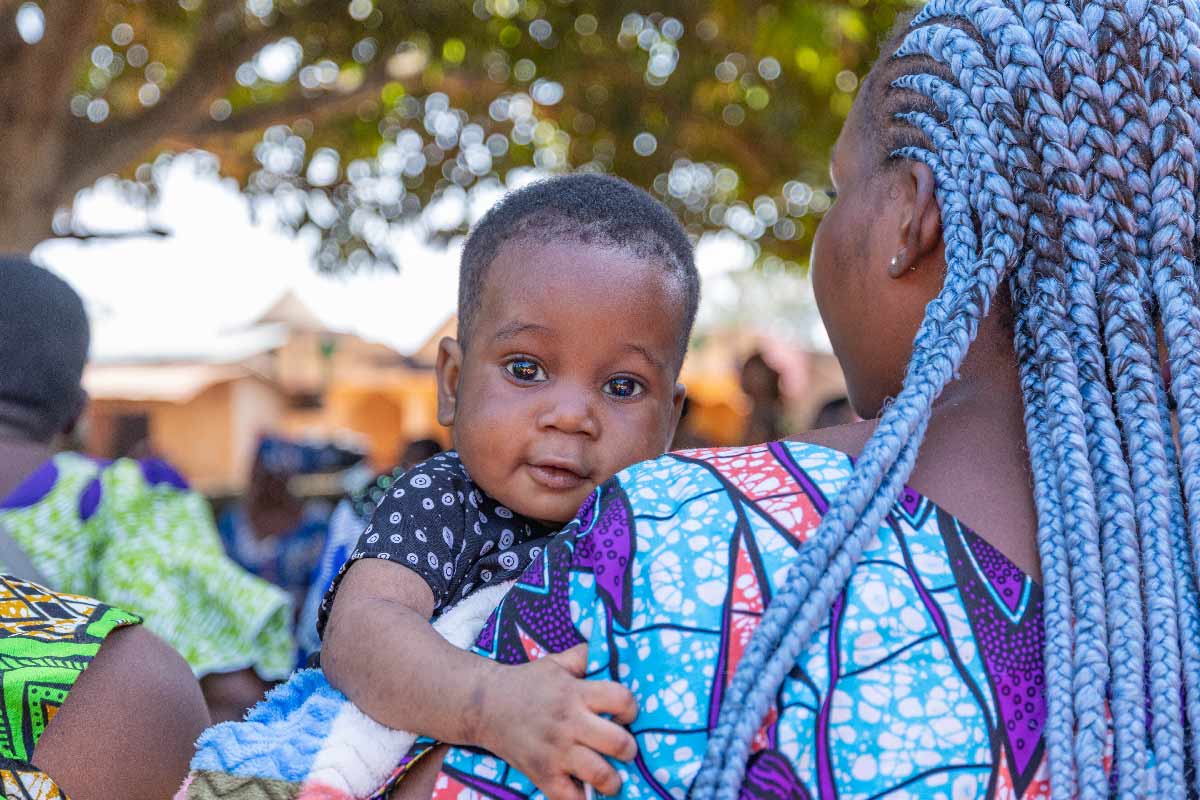Q&A: COVAX and the Humanitarian Buffer
Refugees, migrants in vulnerable situations, asylum seekers, stateless people and other populations of concern in humanitarian settings are at higher risk of being overlooked in the global COVID-19 vaccine roll-out. Learn what COVAX is doing to make sure that doesn’t happen.
- 10 March 2022
- 8 min read
- by Gavi Staff

A year in, COVAX has delivered 1.36 billion doses of COVID-19 vaccines to 144 countries and territories. That scale and spread is crucial: our best shot at ending the pandemic is to make sure everyone, everywhere, can get immunised.
But some populations remain hard to reach via national vaccine allocation pathways. A relatively small, but high-impact, proportion of COVAX vaccines are therefore made available for people in humanitarian settings, and assigned and distributed to the people most in need by an unprecedented, responsive instrument called the COVAX Humanitarian Buffer.
Whatever course the pandemic takes, it’s imperative we prevent COVID-19 becoming yet another epidemic of the less fortunate.
This afternoon, 840,000 doses of vaccines will touch down at Entebbe airport, destined for migrants and refugees living in 13 districts across Uganda.
These doses are part of an innovative mechanism that has brought partners across the global health and humanitarian fields to work together. In a series of questions we explore how this mechanism works, what the needs and challenges in humanitarian settings are and where we might be headed as the pandemic continues to evolve.
What is COVAX doing to make sure people in humanitarian settings, who might be harder to reach, also get access to COVID-19 vaccines?
Sadly some of the places that are shouldering the greatest burden when it comes to humanitarian situations are also the ones that have had very little access to vaccines. As of 9 March 2022, 17 lower-income countries hosting about 70% of the people in need of humanitarian assistance, have received only about 12 percent of COVID-19 vaccines delivered to countries with a humanitarian caseload1.
COVAX plays a leading role in humanitarian settings globally, a role which has grown since the end of 2021. As of 9 March 2022, about 50% of the vaccines that were going to humanitarian settings or to countries with a humanitarian response plan or flash appeal were coming via COVAX.
These doses are primarily reaching populations as part of country allocations, which speaks to the important role that countries and their health systems play in making sure that populations in need of humanitarian assistance have access to vaccines.
What COVAX partners are now focusing on are the hardest to reach within these settings via the Humanitarian Buffer: a proportionately small part of COVAX volumes, but a critical instrument from an equity point of view.
What is the Humanitarian Buffer? How is it separate from other COVAX deliveries?
The Humanitarian Buffer is a mechanism designed by COVAX and humanitarian sector to reach the hardest-to-reach people in the world with lifesaving vaccines. These are also the people, owing to their reliance on humanitarian assistance, that are least equipped to cope with COVID-19-induced morbidity and mortality, and the multiplier effect it has in terms of fragility and vulnerability in their communities.
The situation at the outset of the pandemic was very uncertain. We didn’t know how the pandemic was going to evolve, which vaccine candidates would be efficacious or appropriate for different settings, and the scale at which certain populations would remain unvaccinated. So in the design of the COVAX facility, there was an allowance of 5% of doses to be kept for the eventuality of some populations not having access to COVAX doses via the normative channels of distribution.
What became the Humanitarian Buffer is intended really to reach populations in humanitarian settings, whether they’re refugees, migrants or asylum seekers, or other vulnerable groups, irrespective of their legal or social or political status. Populations that might be caught up in conflict zones, for example, or have been deliberately excluded from vaccination campaigns, or are invisible to health systems.
The need to get vaccines to these harder-to-reach populations is not just a matter of ethics and justice. Gaps in global immunisation coverage leave spaces in which the virus can replicate unchecked, increasing the likelihood of new mutations, the likelihood of new variants. It’s literally true that we’re only safe when we’re all safe. Whatever course the pandemic takes, it’s imperative we prevent COVID-19 becoming yet another epidemic of the less fortunate.
Have you read?
How many people number among the populations of concern in humanitarian settings?
In 2021, the Inter-Agency Standing Committee, which is the highest coordination platform for the humanitarian sector, estimated that there were roughly 167 million people likely to remain without access to COVID-19 vaccines in humanitarian settings. That number included some 60 to 80 million people in areas that are under the state-like control of non-state, armed groups, which are naturally hard to access for national governments, and are usually active conflict zones.
Over the course of the last year, we’ve seen some improvement in the level of coverage of registered refugees, asylum seekers and stateless persons which are under the mandate of UNHCR. It’s a positive development: this segment of the population of concern for the Humanitarian Buffer has gotten access via the national plans in host countries. So the figure has been revised for 2022: we’re now looking at 155 million people.
That’s still a pretty big number, and a big proportion – nearly half – of those people are in areas controlled by non-state armed groups. But it’s an encouraging sign for the advocacy we have done with countries, and continue to do, to underscore that the responsibility to cover all populations within a territory falls to the national government, regardless of a given population’s legal, political or other status.
It’s worth noting, too, that the landscape in humanitarian settings is almost always a fluid one. A lot of forecasts that we had even at the beginning of 2022 have probably radically changed because of the Ukraine crisis, for instance. That again underscores the need for a Buffer – an agile, responsive reserve of vaccine doses that can plug new or widening cracks in the global vaccination landscape.
What’s the process? How do populations get access to Humanitarian Buffer vaccine doses?
The Humanitarian Buffer is an innovative, flexible mechanism, which can be applied to by national governments as well as humanitarian agencies on behalf of a population of concern. There’s no geographic limit as to where these doses might go. Need is the driving factor, guided by humanitarian principles of humanity, neutrality, impartiality, and independent decision-making.
The process runs as follows: a humanitarian agency or a governmental body working in an area with a population of concern which remains without access to life-saving COVID-19 vaccines submits an application to the Humanitarian Buffer Secretariat. The Secretariat processes the application, and works with the applicant to make sure that all the information required for decision-making is there. The completed application is then sent to the decision-making body, which is a group of humanitarian and public health experts, members of various humanitarian agencies, under the auspices of the Inter-Agency Standing Committee.
After a decision has been taken, which happens within a week, the Humanitarian Buffer Secretariat and support team at COVAX work with the applicant, WHO, and UNICEF Supply Division to figure out the various downstream processes, including regulatory issues, importation issues, and so on, which need sorting out before vaccines can be received in country at the designated port of entry. Applicants can also request delivery funding along with doses - the decision on both doses and delivery funding is taken simultaneously.
Are these populations of concern receiving the same kinds of vaccines as everyone else, or are there constraints related to their location that means that the full COVAX portfolio isn’t available to them?
From a policy perspective, we want to have contextual parity in product type, level of coverage and so on. That means taking a look at the level of coverage in the host population, for example, if we’re looking at internally displaced persons or refugees in a given context. Ultra cold-chain requirements, ability to access a population repeatedly for second doses, if in hard-to-reach areas, safety of vaccinators and other factors play a role, as well as whether the type of vaccine and the corresponding vaccination schedule is appropriate and feasible in a given place
Our aim is to be able to leverage the whole product portfolio of the COVAX Facility for the Humanitarian Buffer to allow for the flexibility and agility needed to operate in humanitarian contexts. To that end, we’ve successfully negotiated indemnification waivers from seven manufacturers.
Two years into the pandemic, one thing that’s perfectly clear is that COVID-19’s impact has not been uniform. Though it’s a global problem, outbreaks land in specific social, economic, infrastructural and health contexts. Getting the vaccine to people in settings of heightened fragility will save lives – but can we do more?
When we’re looking at humanitarian settings, it’s crucial to adapt to the needs of people in those areas. Each context presents a different challenge – responses need to be tailored. We need to make sure we’re not just approaching these settings vertically with, you know, COVID-19 vaccine programming, where there might be other pressing needs related, for instance, to sanitation or food security. Humanitarian partners look at the whole basket of things that people urgently need – of which COVID-19 vaccination is a part.
For example, in some settings you might find that children never received their basic, routine vaccines. And if we’re able to promote health system strengthening and integration, that allows us to build a platform for delivering COVID-19 vaccines, but also broader access to routine immunisation and therefore primary healthcare. Basically, all people, regardless of their situation, should have access to health services – including vaccination.









